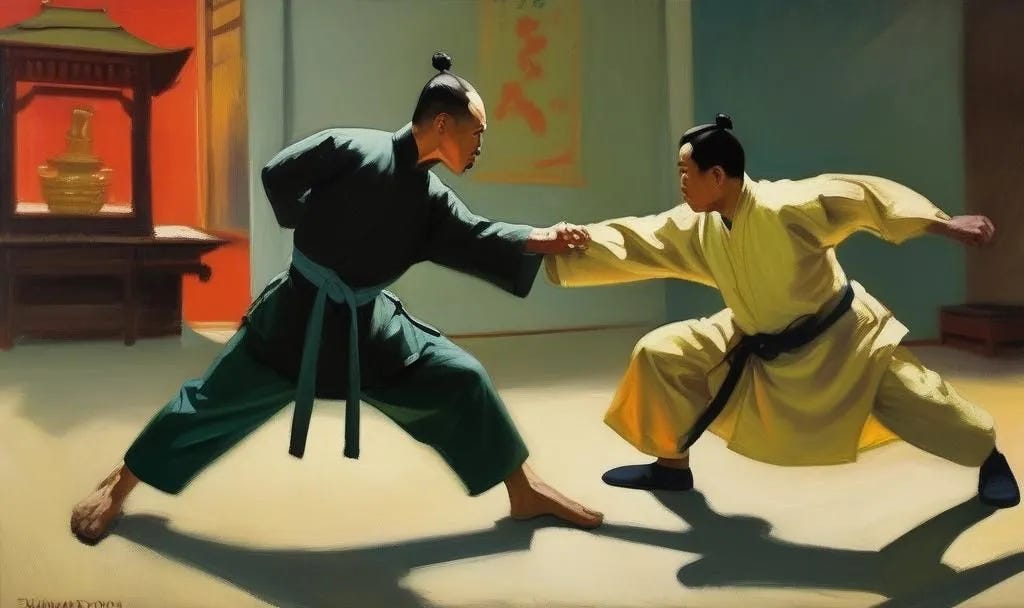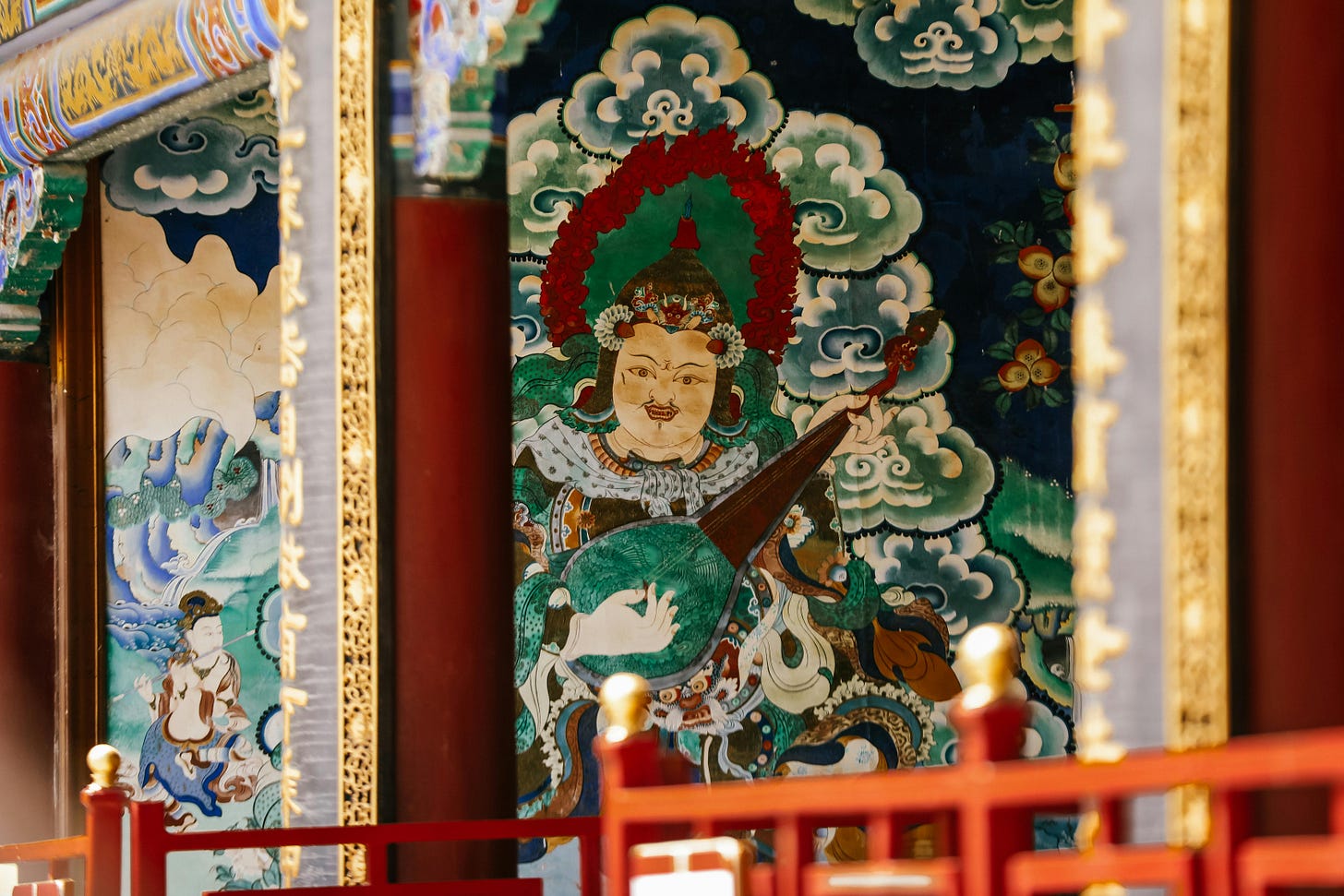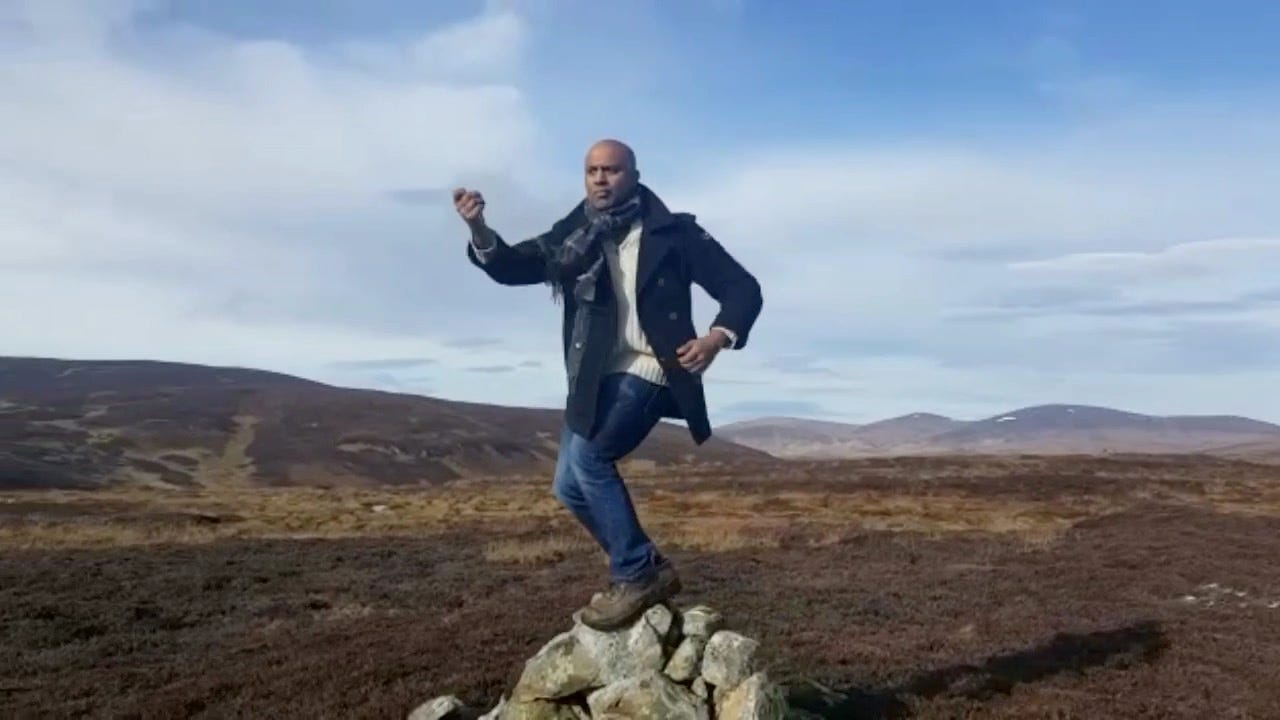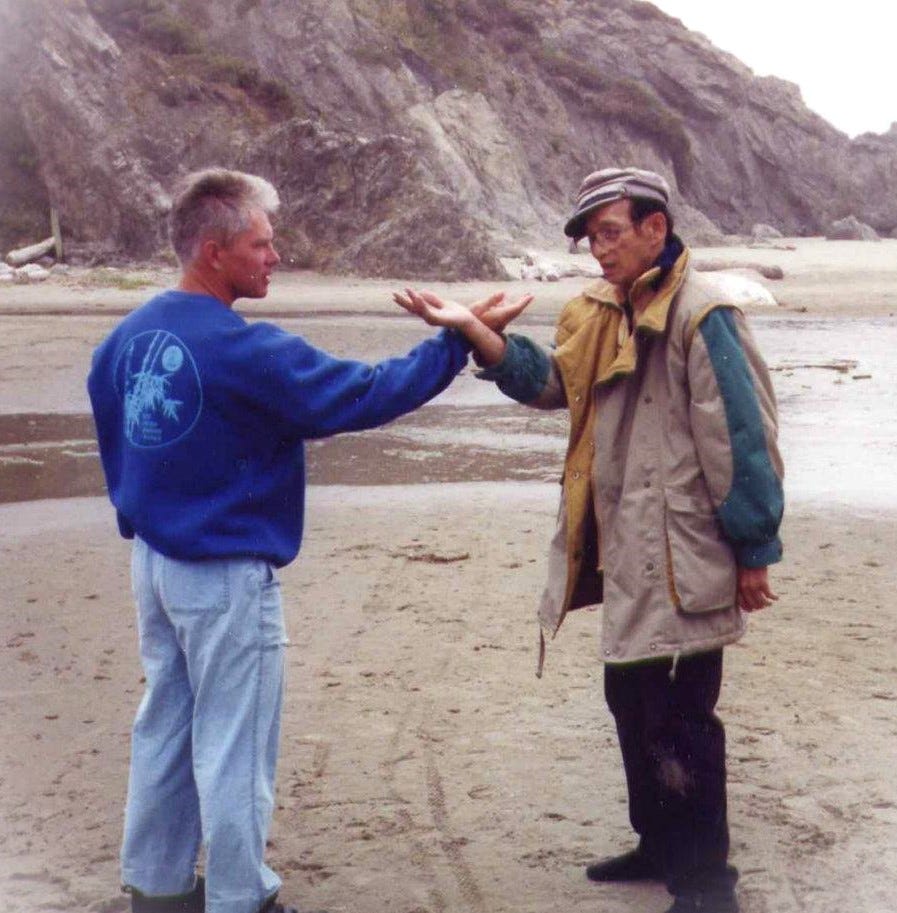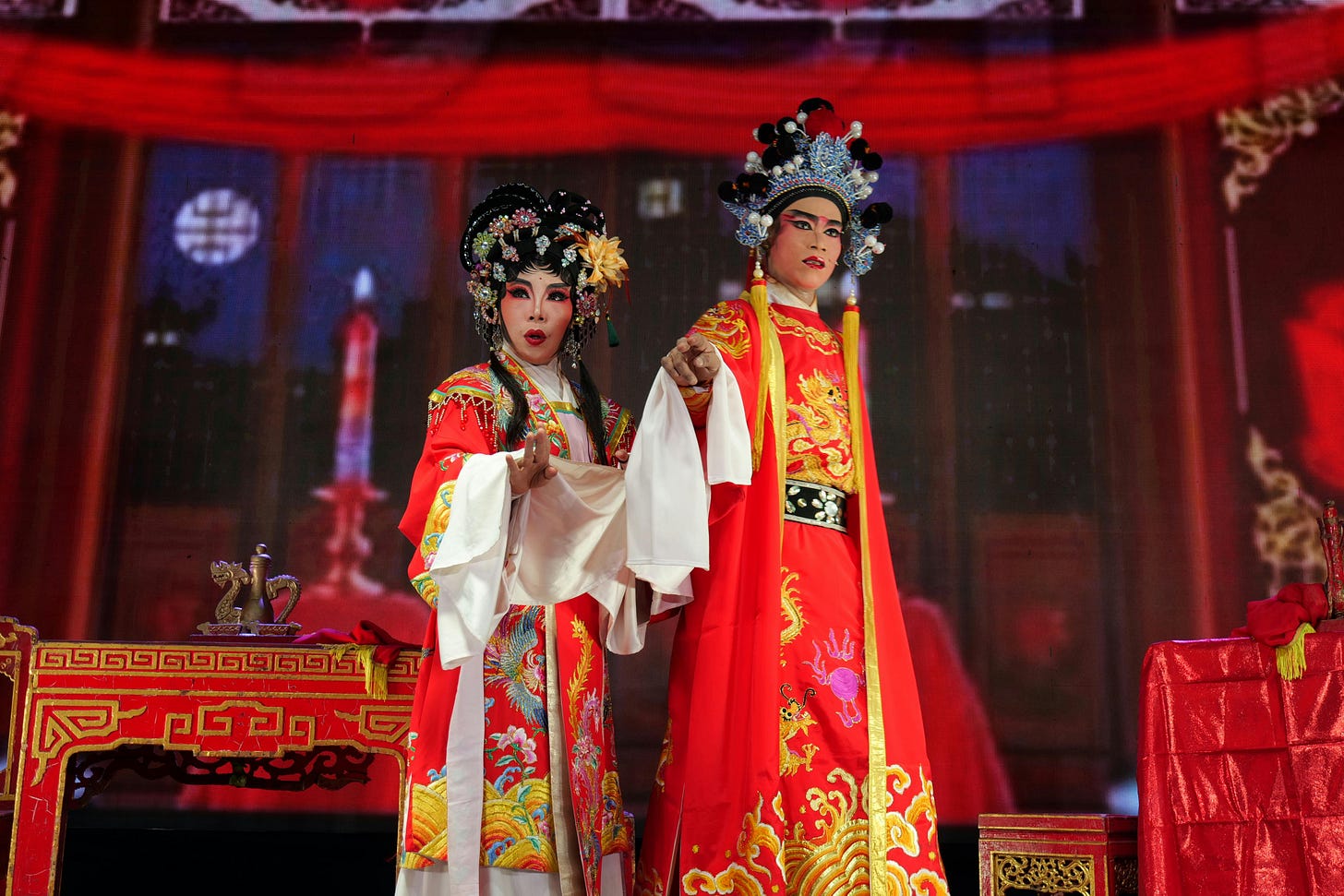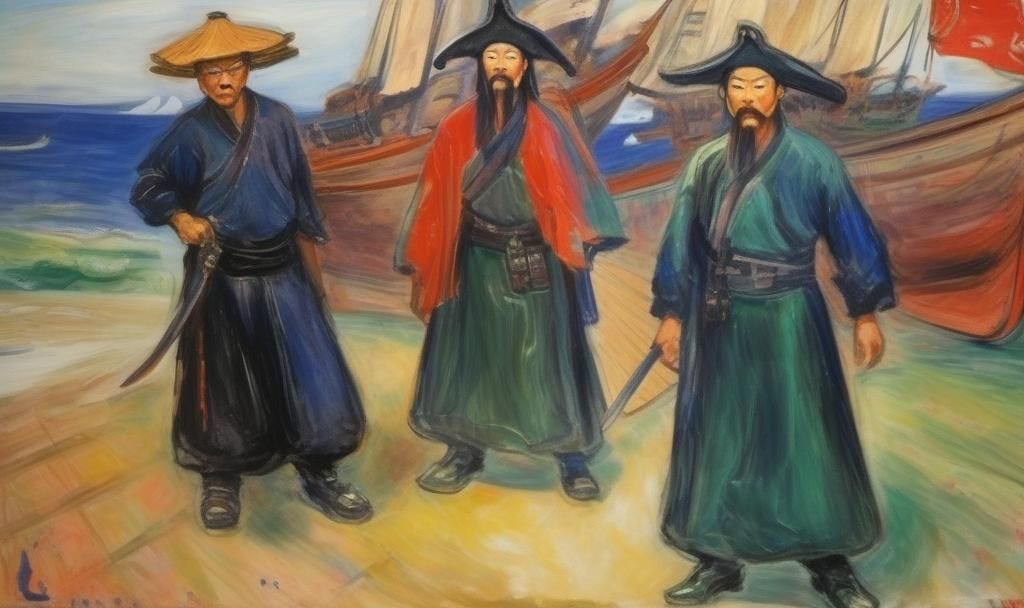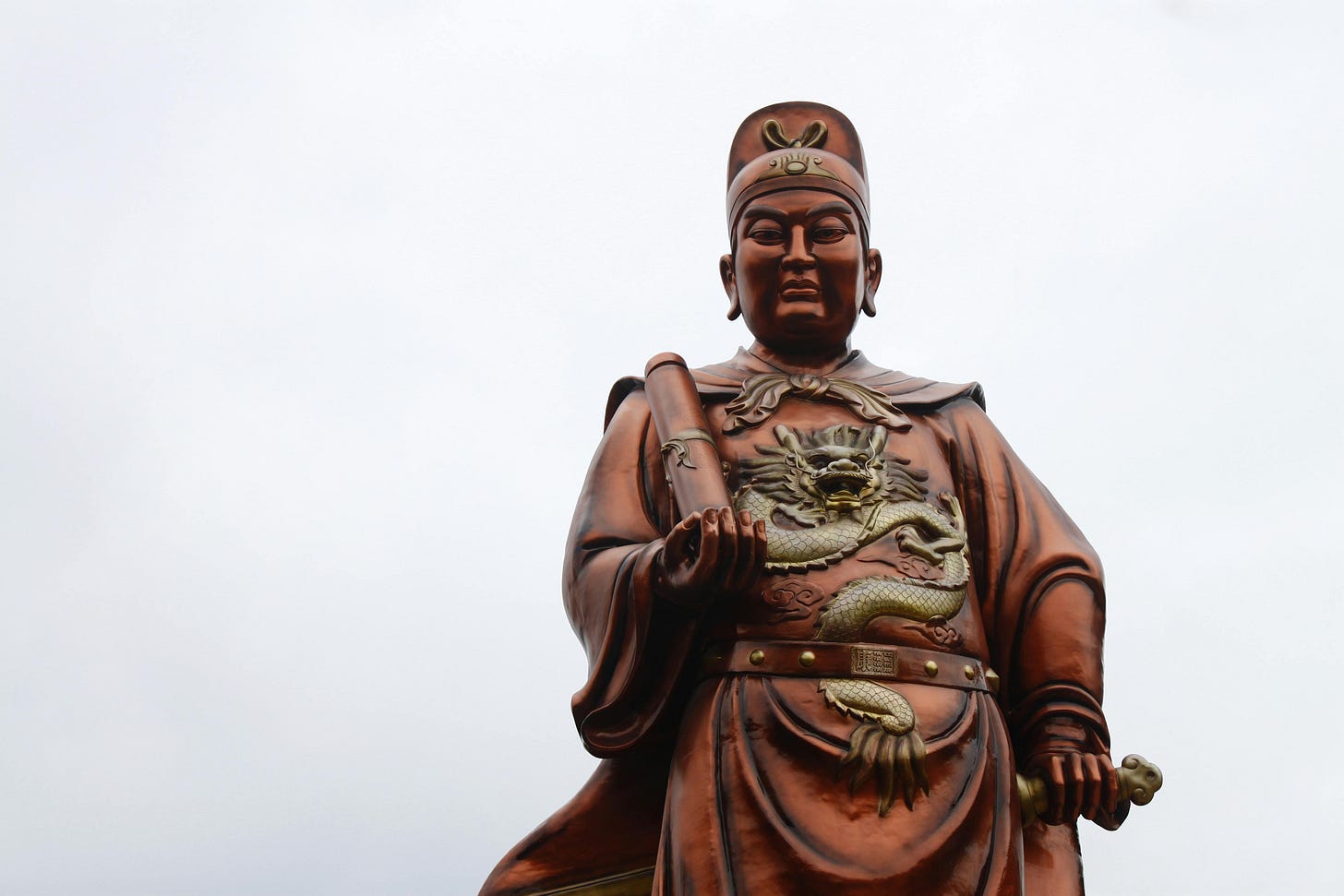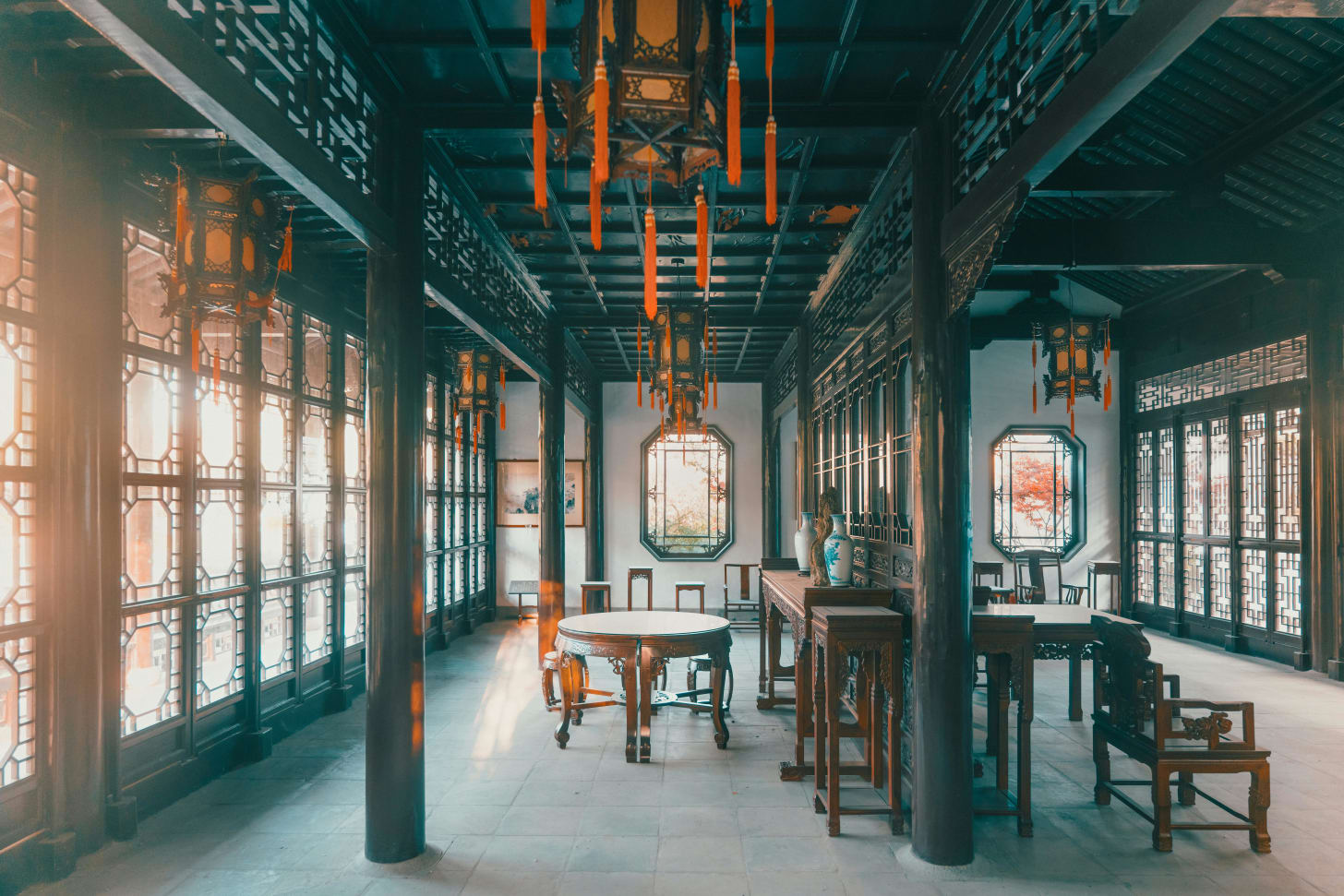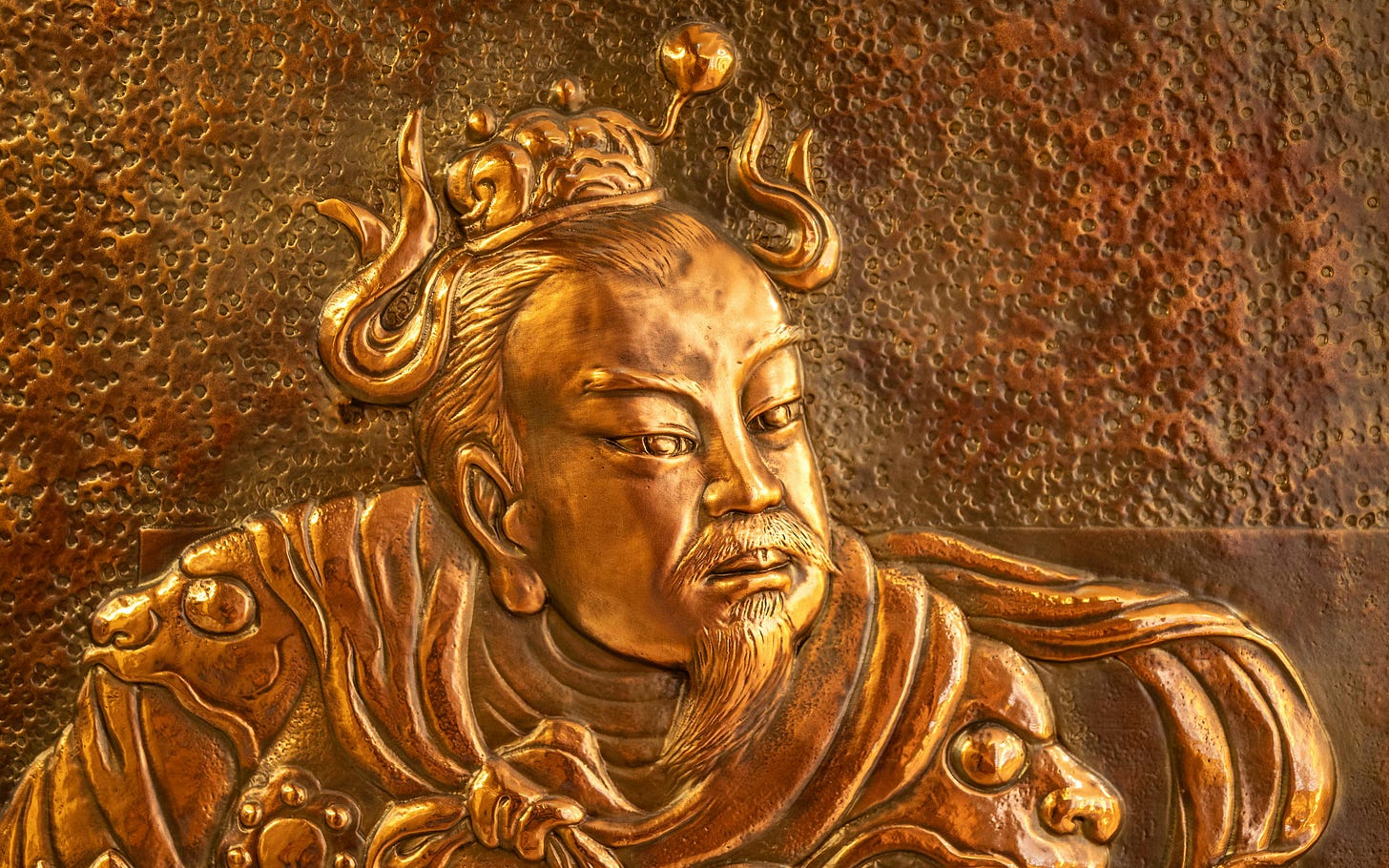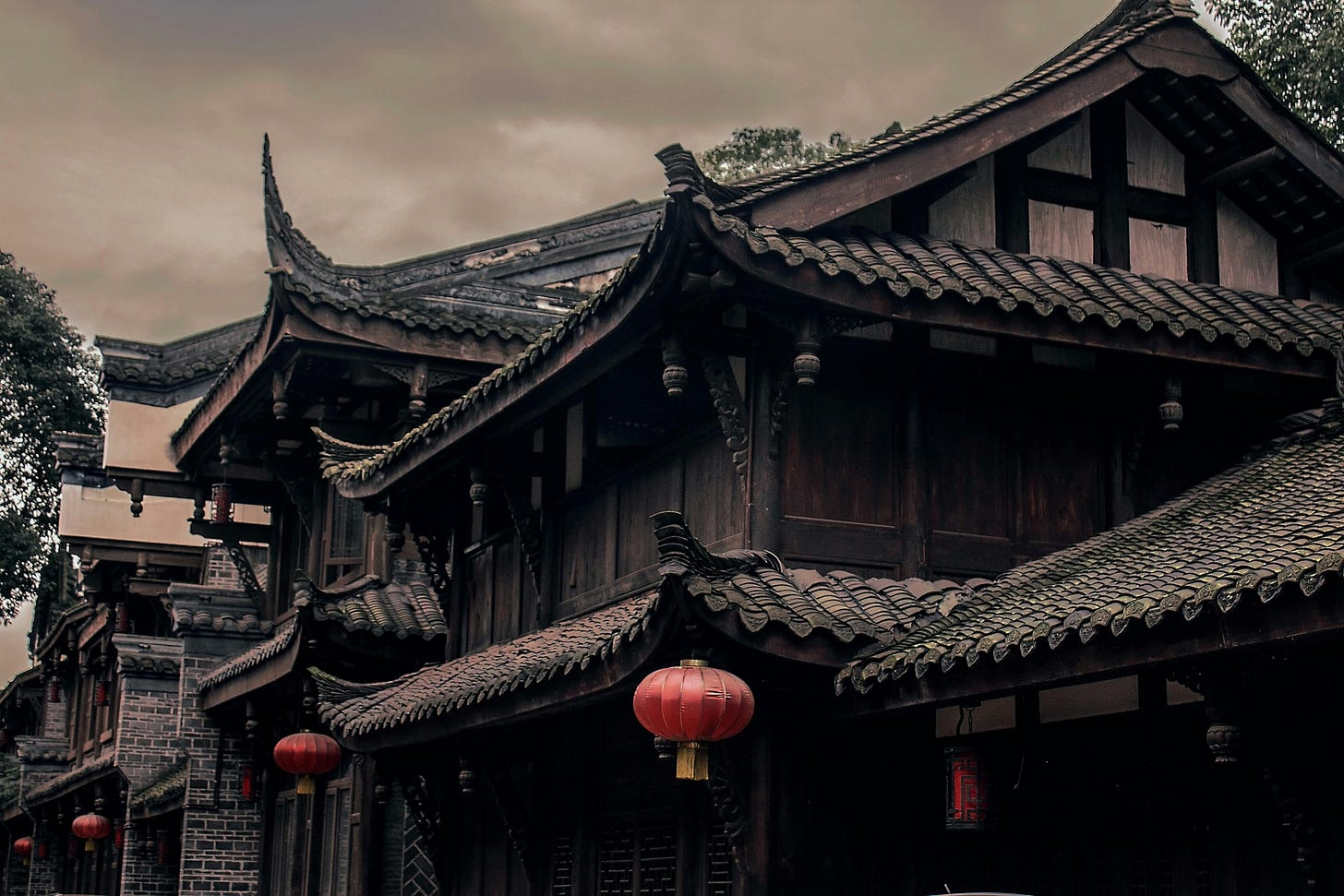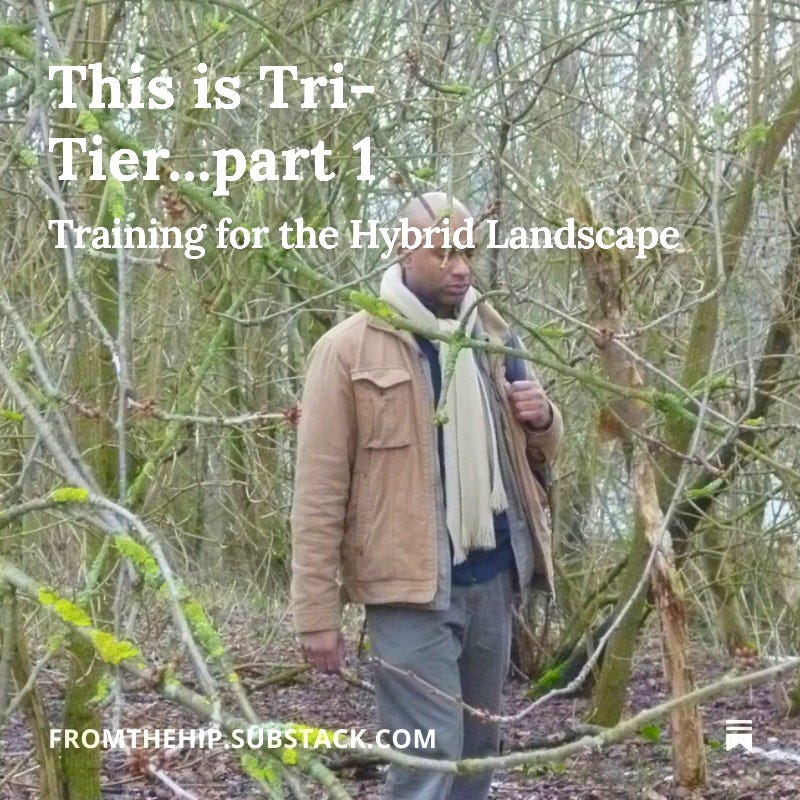The Hidden Master
A teacher of Bruce Lee, a Taoist sage, healer, guide, and martial art legend...
Seattle, USA, 1959…
A lean Chinese gentleman, aged about 19, with defined musculature, is new to the area. He’s a young man, exuding confident energy and a bright movie star persona.
Next to him, is an older figure, in his 40s. This man, also of Chinese origin, stands just a bit over 5 ft, yet his slight, unassuming stature, disguises an individual with lethal skill, subtle power and ancient wisdom.
The younger man is already a formidable martial presence but it seems, he’s keen to 'touch hands', as the Chinese martial artists describe their hand sensitivity drills, to test the offensive and defensive skills of another. A way to see, if an exponent has that special something...
Some might see this tradition as diplomatic sparring—a way to test without anyone losing too much face, or receiving too much of a bruised face. Such practises can stay civilised affairs, with finesse and playful interaction, or can, at times, regress into a more heated exchange.
Here, the young man has respect for the older master; he’s just being that inquisitive, open cup. This shall remain a respectful, civil engagement.
He wants to touch hands with the older master- because he knows that this man has studied numerous forms of Gong Fu.
He himself has received training in Wing Chun, from a top master, in Hong Kong. He’s also been taught some Taiji by his father and, in exchange for sharing dance lessons, on the Cha Cha, he was given some sessions on Northern Praying Mantis, by another teacher, in Hong Kong.
This young man is also equipped with the energy of youth, a rare level of hand speed and would be considered a natural. He is unable to get through the master's defences.
Not all masters are known...
Many of you have, no doubt, guessed that the young man, in this setting, is none other than… the legendary Bruce Lee.
Yet you’d be forgiven, if you failed to identify the mysterious, older master, also mentioned. Hong Kong cinema has done a great job at generating awareness, about Bruce Lee's iconic Wing Chun master, Ip Man. There were other teachers though, along Bruce’s martial journey…
Last year, I interviewed a friend, who was a long-time student of Bruce Lee's other Wing Chun mentor, The King of Talking Hands, street fighter extraordinaire and top Ip Man fighter, the late Wong Shun Leung. Who then, is this mysterious master?
To me, he’s an even more fascinating piece of martial history, to explore, for his knowledge went into deep realms, including the Taoist internal arts and rare healing practices. His name is Fook Yueng.
Fook Yueng, from my research, never seemed to care too much for titles, such as master; even if students were keen to give him this deserved recognition.
It appears, he didn't want to be known in the outside world, as his students have since conveyed. He also insisted on Bruce Lee not publicly acknowledging him or announcing him, as one of his teachers.
The Kung Fu world is full of this type of etiquette and subtle nuances, hard to fully convey to those, less familiar with the Orient's martial codes of conduct and traditional Asian culture.
Fook Yueng's reasons for not wanting Bruce to proclaim him, one of his teachers and cherished martial influence, are possibly because he didn’t want to offend Bruce Lee's primary teacher, Ip Man.
There’s something admirable in this, considering, such a reference, from the top Kung Fu movie star and world sensation, would’ve provided Fook Yueng with queues of students, hungry to gain even a smidgen, of Lee's fighting skills. Many teachers don’t want hundreds of students or fame.
Why he wanted to be less well-known, may be even more complex. Whilst I don't want to speculate, it may have had some spiritual motivations behind it and a combination of other more worldly factors. Masters can be a paradox.
Ancient Ways in Seattle...
When Bruce arrived in Seattle, he was welcomed by Fook Yueng, as Fook was a close family friend. He’d been in the Red Boat Opera, with Bruce Lee's father, Lee Hoi Chuen.
In Oriental martial circles, he’d have been regarded as a Kung Fu uncle- which in many ways, can be a bond, as strong as actual family ties but with other links, forging the relationship.
This was particularly the case here, as Fook Yueng agreed to share his arts, with the aspiring martial artist. Bruce was a sponge for all things martial-related and a quick learner. His enthusiasm and hunger to improve his skills would’ve made Bruce an inspiring student, for someone, such as Fook, who had amassed so much knowledge.
My reasons for delving into the world of Fook Yueng are complex and varied. They’re also based on the fact that some of his arts connect with certain paths, intuitively explored, or that I was guided to.
I was fortunate in being able to establish links, with some of Fook's students, to gain their unique insights, into the master. So at this point, I’d like to thank and acknowledge Sifu Andy Dale, who graciously shared the images of Mr Yueng, used in this article and various thoughtful insights.
These provided pebbles, along a pathway through time, that greatly helped my from a distance dip into this martial past…
Now, the intention here is not to simply focus on Fook’s role as a teacher and influence on Bruce Lee. This relationship seemed to have spanned a significant number of years and whilst one can't overlook this connection, there’s so much more to this hidden master’s story, as no doubt, Fook’s remaining students would respectfully acknowledge.
The connection to Lee and the respect shown by him to Fook, does though, allow readers to get some sense of this master's abilities. It was explained that Bruce was taught some key martial knowledge and skills, by Fook.
He was taught Fook's chi sau (sticking hands) sensitivity drills and he was taught some Mantis forms. The latter you can even spot, in some of Bruce's on-screen work. (He did, as mentioned, also gain some training in a Mantis system in Hong Kong)
Bruce would already have been familiar with chi sau, as it's a staple part of many Chinese arts, especially Wing Chun. It would invariably have been taught to Bruce, by Ip Man and Wong Shun Leung.
What’s interesting, is that apparently, when Bruce left Hong Kong, he couldn't get passed the skills of those teachers; yet when he came back to Hong Kong, later in his life, there was a very distinct improvement in his chi sau abilities. This may well have been to a significant level, a result of Yueng's influence on him and, of course, the dedication he put into training.
Journey with me now, back in time, to an even older chapter in martial history…
The Red Boat Opera...
Fook Yueng's life, back in China, in earlier, harder times, was very different. They were most certainly filled with hours of dedicated training. Fook Yueng, along with Bruce Lee's father, performed in the Red Boat Opera.
The troupe would travel along the coast of the mainland, and along various rivers, such as the Pearl River, performing in different cities- at festivals, religious holidays, and other occasions.
These performers were expected to have acrobatic skills, high levels of flexibility, strength, and endurance. They would often have their own martial arts skills, too. Especially necessary, given many of the heroic characters they portrayed.
In fact, both Fook and Lee Hoi both would portray The Monkey King and to depict this epic character, it would require: athleticism, leaps, timing, and low stances.
When taught properly, the Monkey systems can be brutal and full of sneaky, unpredictable moves. Fook Yueng also knew such methods.
I can imagine these hard, travelling performers to have something of the attributes and disciplined lifestyle that today's Circus du Soleil performers possess.
The Red Boat performers used their martial arts to keep healthy and for mental attributes, so they could be resilient, in such a physically demanding performing realm.
There were also more base reasons for keeping martial skills sharp. They would also have to face bandits, pirates, and challenges. Life on the boats would not always be a comfortable journey.
The nature of the traveling lifestyle did give them the chance to exchange their arts with each other and to learn from masters, they got to meet, in different cities.
The skills of these Red Boat performers can't be overlooked, even though in social hierarchy, their position was not necessarily so highly regarded.
Some accounts convey their world, as one that drew in: secret societies, political assassins, spies, crims and fighters. As is often the case with martial culture, sometimes, it's hard to see the extent to which myth and historical reality have merged.
They would, nonetheless, often take stowaways on board, hiding for political reasons. It’s therefore feasible that upon these floating dens of artists were worlds within worlds. The more granite of martial art fraternities often attract intense energies and intriguing parties…
It’s been conveyed that Fook may’ve belonged to one of these secret groups and this is where he gained some of his fighting skills. The element of secrecy and caution with what he would show might have come from this connection.
The world of the Red Boat performers was significantly disrupted though, during the Japanese invasions, when trade routes were blocked or put under fierce control.
This fascinating floating facet of Chinese culture faded after this but the history is an interesting one that lingers on, in popular culture and the proudly preserved traditions of certain arts...
Fook Yueng came from this world, where the physical, spiritual, and mythical all seemed to splash together, like bold coloured paints, converging on a vibrant Eastern canvas.
The skilled master, certainly came out of it, possessing a body forged through hard work and skills in various Chinese arts. Such styles included: Northern and Southern Praying Mantis, Red Boat Wing Chun, Monkey style, Bak Mei, Taiji, Hsing Yi, and Bagua. It’s said there were many other arts, he was exposed to, as well.
A Skilled Teacher...
In Seattle, where Fook eventually settled, thus escaping the Japanese aggression, he earned a good reputation, among highly skilled martial artists, and those connected to the security and intelligence world, who he taught.
Jesse Glover, Bruce Lee's first student, the late African American martial arts instructor, was well-versed in boxing and a Judo champion, before training with Bruce.
Jesse, known for his own no nonsense hand strikes and expertise in Non-Classical Gung- Fu, apparently conveyed some interesting, respectful insights, about Fook Yueng’s abilities. Many others also hold the late master, in high regard.
There’s a story that when Bruce Lee introduced some of his students to Fook, the seasoned teacher carried out an impressive, if not painful demonstration on one of Bruce's more powerful fighters, no doubt leaving them all quite in awe of his skills.
It may also be the case, that even Bruce in his prime was still not of a skill level to fully handle the abilities of Fook. Still, Fook had immense respect for Bruce Lee, who was not just a fast learner but would go away and practice what was shown to him, relentlessly.
It was explained that Fook liked to focus on close-in fighting and once his hands landed on you, it was all over! Mantis and Wing Chun both have a lot of tactics, designed for trapping range. Some of the Southern Mantis styles also have very quick hand strikes that get deployed, at close range.
This could also be a Red Boat influence, if we assume some of their training took place, in the confinement of the boats and junks they travelled upon. Along with this, as Fook was short in height, it would’ve been to his advantage, in certain encounters, to get in close.
He taught various practitioners, who came from other arts, including the Japanese styles that flourished in the US, during that time. Of course, there was much more to his skills than close-range striking and trapping. He did nonetheless emphasize the development of hand sensitivity and two-man drills.
After many years of training, in diverse arts, you’re often able to see the core principles, lying under the techniques of a system.
In observing the arts Fook taught, I can see that he also taught his students how to adapt their bodies like water, to the incoming attack of the opponent. There’s that Taoist fluidity at play.
He also used agile footwork, trips, spiral waves, pressure points and strikes that break the spinal alignment of an attacker. Some of his long-distance flowing work, that his former students convey, reminds me of some of the soft style Russian martial arts, such as Systema.
Especially acknowledged was his relaxed sticking and trapping hands, in relation to self-defence- which will so very often become a close-range skirmish.
More inspiring, was to learn how he treated his students, with real care for their well-being, health and progress. He was also said to be godfather to Bruce Lee's children and understandably was very saddened, by both Bruce and his talented son, Brandon's early passing.
The Taoist Adept...
My own training approach- Tri-Tier, utilises various tactics and forms of energetic training. This thus inspired me to explore more about Fook Yueng's knowledge, in this area. He was said to be a Taoist adept and a gifted healer.
There are many descriptions of his high levels of awareness and sensitivity to people and their ailments. He had specific ways of detecting the injuries sustained by people and would help them to overcome them.
It seems he also had a good sense of humour. His smile, in photos, is open and conveys his compassionate side. Again, we encounter that paradox of formidable, potentially devastating skills with kindness and generosity of spirit.
Based in Oregon, long time Taiji instructor Gene Burnett got to encounter Fook’s skills, during his 13 years training with Sifu Andy Dale, who was a close student of the Chinese master. He mentions that Fook was ‘always smiling, always helpful.’
Gene also shared that Fook had a ‘grip of steel’….
“I used to joke that he was the only person I'd met who could make a teacup tap out.”
Fook Yueng's chi kung practices are for energy cultivation, tuning into subtle energies, healing, and for developing sensitivity.
It's amazing what one can detect with high levels of sensitivity and, at times, this internal attribute could be more valid for self-preservation than the martial aspects. Certainly helped me a fair few times, in the security field.
Viewing footage of one of his chi kung practices, it’s complex, unusual, and ethereal. Some things you are instinctively drawn to; others you are not... but certainly, he seems to have focused much more on the energy cultivation elements, in his latter years and it was a key part of his teaching.
Some of his deeper nei gong practices are said to have come from a specific mountain range- Tian Shan, which means Mountains of Heaven. Interestingly enough, east of this range is Altai in Mongolia- an area, which has shown up a few times, in different areas of my more esoteric research.
Circles…
What was coincidental, was when a couple of weeks ago, I decided to return to the Taoist internal art of Bagua- an art I sometimes explore, from specific angles. Last year, I’d put it aside, with a need to understand some other knowledge, shared with me, from an equally deep tradition, yet from a very different region. Sometimes, to grasp the effects of an art on more profound levels, you have to give it isolated attention.
Anyway, I decided to return to Bagua's Taoist circle walking practice... Later that day, I received an email, from Sifu Andy Dale about Fook Yueng, telling me how Fook would get his students to do the circle walking. It's a powerful practice and the gentle synchronicity of these events made me smile.
Also ironic was that it was about this time, in April last year, when I did the interview with a student of one of Bruce Lee's other teachers and influences. I recall the day of the interview well…
We were in Chinatown, London and towards the end of our long chat, there was this almost unearthly, heavy down pour and oppressive greyness. Later, I learnt that another of my especially influential teachers, from a very different art, had sadly passed away then…
Another coincidence was that today, after doing an even more extended training, some strong tensions and external turbulence, surfaced. It made me feel distracted and not at all, in the mood, to write articles. Then, as the tension dissipated, this strong intuitive sense was persistently felt- that I should keep going and write this particular article on this day - the 23rd of April, 2024.
The feeling felt is hard to describe, yet it stayed with me- so I proceeded to write. This evening, while cross-checking some facts, about Fook Yueng, I learnt that Fook actually passed away on the evening of April 23, 2012- twelve years from today!
Sometimes, the interesting masters whisper to us through their legacy... maybe sometimes they whisper to us, in other ways.
Aran
23 April 2024
(This article has been edited since then, to include further insights and no doubt more will be added, as more of Fook’s students get in touch...)
About the author
Based in London, Aran Dharmeratnam is the founder of Tri-Tier. He specialises in risk reduction and self-protection training, often working with high-profile figures and their families. With experience in various areas of the security sector, Aran also works with global security companies involved in private investigations and strategic intelligence. He’s been deployed on the ground, in numerous cases. Aran’s insights have appeared in The Financial Times, The Spectator, LBC, Aviation Security International, and Security Management Today.
For consultations or training contact: office@tri-tier.com




